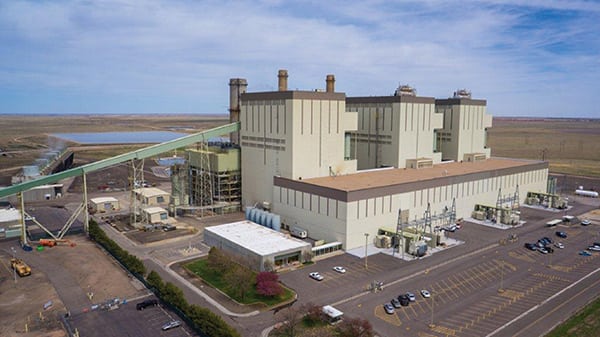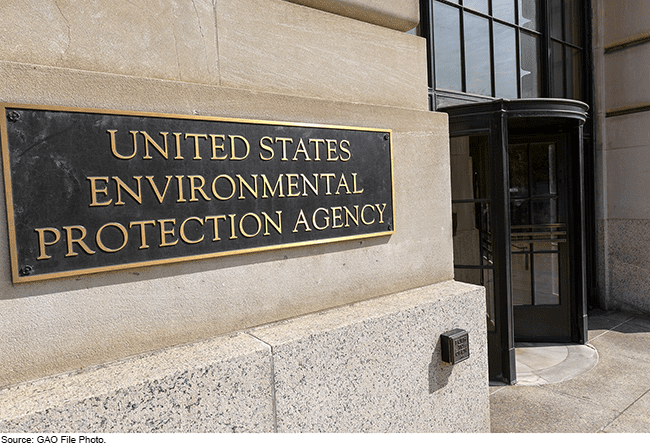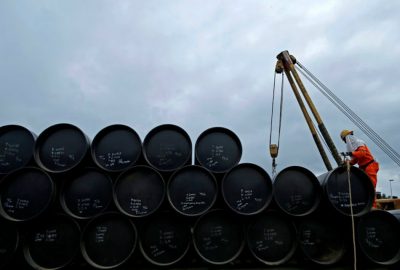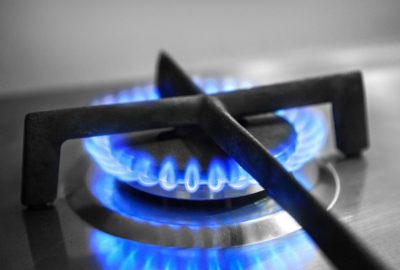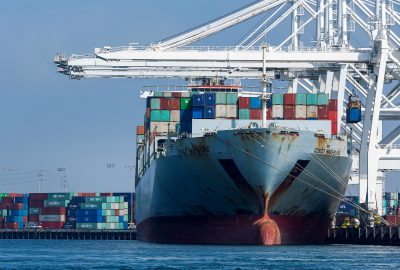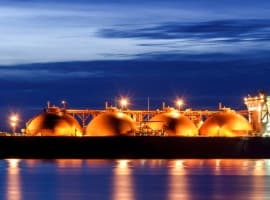Compared to recent years, which have been characterized by chronic energy shortages and price volatility, the world appears to be trundling toward a new energy market context, defined by an unprecedented oversupply of oil and gas coupled with weakening demand for fossil fuels. While the relief is welcome, these attributes are setting the stage for a “buyer’s market in the second half of this decade,” said Dr. Fatih Birol, executive director of the International Energy Agency (IEA), at the launch of the 2024 World Energy Outlook (WEO 2024) in October. That will have nuanced implications for the power sector including competitive pressures on renewables, reduced electricity prices in fossil-fuel-dependent markets, and potential challenges to clean energy investment amid rising flexibility and grid modernization needs, he suggested.
All of these are poised to play out as other intricate and interdependent realities continue to recarve the world’s energy future, the Paris-based intergovernmental organization’s flagship annual outlook suggests. The report prominently highlights new uncertainties embedded in volatile shifts in power demand and supply dynamics, an ever-more urgent need for grid modernization, and the growing precariousness of supply chains amid geopolitical tensions.
1. Electricity Demand Is Set to Skyrocket. Can the Grid Keep Up? Perhaps the biggest wildcard is how fast electricity demand is poised to increase. The IEA notes that since 2010, global electricity demand has increased on average by 2.7% per year—far more than energy demand, driven by electrification in households, commercial buildings, transport, and industry.
As it has in past years, the WEO 2024 explores three primary scenarios: a Stated Policies Scenario (STEPS), which assumes today’s policy settings will endure and is associated with a 2.4-degree-C rise in global temperatures by 2100 (with a 50% probability); the Announced Pledges Scenario (APS), which assumes all governmental aspirational targets will be achieved (and limits the warming rise to 1.7 degrees C); and the Net-Zero by 2050 (NZE) scenario, which maps a normative pathway achieving net-zero carbon dioxide emissions by mid-century, aligned with limiting warming to 1.5 degrees C. The STEPS outlook notably is refined with sensitivities such as electric vehicle (EV) adoption, renewable deployment, liquefied natural gas (LNG) demand, data center electricity use, and efficiency improvements.
In the STEPS, the IEA projects global power demand will nearly double by 2050—rising a stunning 50,000 TWh from 26,000 TWh in 2023. “From 2023 to 2035 alone, growth averages nearly 1,000 TWh per year, equivalent to adding another Japan to global electricity consumption each year,” it says. Which sector will drive the most growth varies. While an EV expansion could raise transportation’s rate of electrification, increased space cooling and appliance ownership is more certainly set to drive growth in the building sector, though that hinges on economic expansion centered on developing economies and is tied to climate impacts. Electrification in industry, meanwhile, could be driven by electricity-intensive clean energy technology manufacturing and energy-intensive industries reliant on high-temperature heat for processes like steel and cement production, as well as the demand for electrolytic hydrogen. While the use of power to produce hydrogen onsite for steel, ammonia, and refining industries could increase demand “very significantly,” the scale and timing are “highly uncertain because they are contingent on how quickly different hydrogen pathways and uses develop,” the WEO 2024 says.
Over the near term, nascent sectors—like data centers and digitalization—will inevitably add an entirely new realm of demand growth potential, the IEA acknowledges, though it is reluctant to make tangible projections. “Our assessment of uncertainties indicates that demand growth to 2030 could vary from the STEPS by as much as 170 TWh,” it says. That could account for “a relatively small share of total global electricity demand growth to 2030, although the sector will be more significant at the national or regional level in major data center markets,” it notes.
Energy efficiency also poses a substantial tempering factor. “A sensitivity analysis indicates that lower efficiencies could cause electricity demand for appliances and cooling in emerging market and developing economies to be around 340 TWh (5%) higher than in the STEPS by 2035. By contrast, faster adoption of effective efficiency standards could result in electricity demand being almost 900 TWh lower in 2035 in these end-uses than in the STEPS,” it says.
2. Energy Security Ever-More Dependent on Electricity. The WEO 2024 notably draws a critical distinction between electricity demand and peak electricity demand, which it emphasizes has become a cornerstone for energy security. “There are two core elements of electricity security: the ability to ensure sufficient capacity to meet peak demand (adequacy) and the ability to manage fluctuations in both demand and renewable energy supply (flexibility),” it explains. In all the IEA’s scenarios, peak demand is slated to soar faster than overall power demand, it warns, and potentially 80% faster in emerging markets and developing economies by 2035 (Figure 1).
 |
|
1. Peak electricity demand by driver and region in the Stated Policies Scenario (STEPS), 2023–2035. Note: Other EMDE = emerging market and developing economies other than China. Peak demand is the average level of demand for the 100 hours of the year with the highest demand. Source: International Energy Agency (IEA) |
A key reason is that more renewables are raising the potential for supply-demand imbalances, but shifts are also growing more prominent on a seasonal level as more regions take up electric heating and cooling, and more end-users become electric. While many regions today rely on natural gas and coal plants for dispatchable capacity, the IEA suggests rapid changes are on the horizon.
“Batteries become essential for dispatchable capacity, and over 1,700 GW of battery capacity are added in the STEPS by 2035,” it projects. In addition, STEPS sees “investment in grids increase by nearly 70% to 2030 to modernize and extend them, and investment in battery storage nearly triples.” The IEA also projects a growing role for demand-response solutions like smart meters, dynamic tariffs, and demand-shifting appliances. Seasonal flexibility, meanwhile, will continue to rely on hydropower, thermal plants, and even curtailed renewable output, with emerging contributions from long-duration hydrogen storage, it suggests.
3. Pressure Is Mounting to Sustain Adequate Power Supply. Still, for now, the world generally persists on an outsized reliance on fossil fuels for power generation. From 2010 to 2023, coal-fired generation shot up by almost 2,000 TWh (+23%), while gas-fired generation rose by more than 1,700 TWh (+36%), driven by growing electricity demand that outpaced clean energy expansion. In emerging economies, like India and Indonesia, coal is slated to remain a backbone of power generation, with unabated fossil fuel use projected to remain near current levels through 2030 under the STEPS scenario. Overall, however, global coal-fired power is expected to decline by more than 10% by 2030, while gas-fired power rises slightly (+5%). In so-called “advanced economies,” coal use is slated to fall 50% and gas 15% by 2050. Overall, unabated fossil fuels could see their share plummet from 60% in 2023 to just 19% by 2050.
The IEA is meanwhile optimistic that nuclear power, which currently provides 9% of the world’s generation (2,765 TWh in 2023), could increase, bolstered by a mix of lifetime extensions, new construction, and the return to operation of existing reactors. Under STEPs, total nuclear generation could dramatically increase to 4,460 TWh by 2050 (from a capacity increase of 416 GW in 2023 to 647 GW in 2050). Yet, while under the APS, it could more than double to 6,055 TWh, nuclear’s share would still hover at 9% by mid-century.
 |
|
2. Electricity generation by source in advanced economies and EMDE in the STEPS, 2023–2030. Over the next five years, clean power in advanced economies is set to grow twice as fast as electricity demand, driven by wind, solar, and nuclear, while coal use declines by 50% and gas by 15%. In emerging markets, solar and wind dominate clean power growth, yet unabated fossil fuel use remains largely unchanged, with China contributing 70% of the category’s clean energy expansion. Source: IEA |
According to the WEO 2024, renewables will account for the vast majority of clean power growth. By 2030, renewables are projected to nearly double their 2023 output, growing from 9,029 TWh to 17,577 TWh, driven predominantly by solar photovoltaic (PV) and wind, which see compound average annual growth rates (CAAGR) of 22% and 12%, respectively. Solar PV alone is set to increase its share of total electricity generation from 5% in 2023 to 17% in 2030 and 37% by 2050, while wind will grow from 8% in 2023 to 21% by 2050 (Figure 2).
However, the IEA is emphatic that the current pace of the transition to clean power remains lacking. “If the power sector is to lead the way to net zero emissions, new low-emissions options need to be brought to market by 2035,” it says. These include small modular reactors; the deployment of carbon capture, utilization, and storage (CCUS) technologies; and the use of low-emissions hydrogen and ammonia. “By 2035, fossil fuels with CCUS and low emissions hydrogen and ammonia start to make an impact in the NZE Scenario: together they deliver an additional 1,100 TWh over what is in the STEPS, setting them up to play an important part in decarbonizing energy beyond 2035,” it says.
4. Natural Gas Demand Rising, but Long-Term Role Uncertain. Over the past few years, natural gas demand has been coasting, driven by a complex mix of higher electricity demand, coal-to-gas switching, and its role as a critical flexibility provider for integrating wind and solar PV. While the IEA outlines a lengthy list of uncertainties that could alter its trajectory, it generally concludes that gas demand will keep growing into the 2030s and beyond.
A key reason is that in 2023, the power sector comprised 40% of global natural gas consumption. Higher power demand—and the myriad uncertainties surrounding demand growth—remains a significant factor. Under STEPS, global power demand is set to increase 2.9% each year between 2023 and 2040. While gas power could help meet demand growth over the short term, over the long-term, gas power utilization could be precarious, it suggests. “In the STEPS, the average capacity factor of natural gas-fired power plants in advanced economies declines from 36% in 2023 to 31% in 2030 and 26% in 2035,” it says. “If they had to meet the higher demand seen in the sensitivity case, the average capacity factor for gas-fired power plants would still decline over time, but it would do so at a slower rate.”
For now, the technical potential for coal-to-gas switching still harbors a tremendous potential of 450 billion cubic meters (bcm). If natural gas prices were to fall low enough, STEPS suggests an additional 300 bcm could be opened to possible switching in China, India, and Southeast Asia. The IEA also notably suggests oil-to-gas switching in the Middle East—oil generation amounted to about 340 TWh in the region in 2023—could precipitate another surge in demand for natural gas. Challenges in scaling renewables, including delays in permitting, supply chain disruptions, and grid connection issues for wind and solar PV, particularly in the U.S. and the European Union (EU), could also amplify this trend. Conversely, however, rapid progress in solar PV deployment could temper natural gas growth.
5. Supply Chain Risks—the Achilles’ Heel of the Clean Energy Transition. Along with fuel supply disruptions, the WEO 2024 expresses concerns about lingering vulnerabilities in supply chains, particularly for clean energy technologies. A key concern is that manufacturing capacities are highly concentrated geographically. “Owing to its supportive industrial policies, China has a very large proportion of existing manufacturing capacity for solar PV, wind, heat pumps, electrolyzers, and battery components,” it notes. “In the case of batteries, for example, China holds almost 90% of global capacity for battery cathode active materials, often a combination of lithium with nickel, cobalt, and manganese, or iron phosphate, and 98% of capacity for battery anode active materials, frequently graphite or silicon-doped graphite.”
Risks extend to critical minerals, whose markets were turbulent in 2023. “From 2023 to 2035, some 50%–75% of supply growth for refined copper, lithium, and cobalt is projected to come from today’s largest producers, and the same is true for about 90% of battery-grade graphite supply and nickel growth,” the report warns.
As IEA Chief Energy Economist Tim Gould explained, many of the battery metals—lithium, nickel, cobalt, and graphite—show “impressive growth” in supply over the next decade. Copper, a fundamental metal for power infrastructure, however, is facing a potential shortage. “With declining ore quality and not a lot of new projects coming through, this means that, with the rapid expansion of demand, there are important gaps between our demand (net of recycling) and the anticipated supply we see coming through from different projects,” he said. While these material constraints “don’t mean that our projections are unattainable by any means,” they “provide a strong signal to policymakers and decisionmakers that we need to close those gaps,” he said. To mitigate risks, the IEA emphasizes innovation, including recycling and alternative technology development, alongside policy interventions like incentives for “responsibly sourced materials” through subsidies, tax credits, and environmental, social, and governance standards.
6. China Is Now an Undeniable Influential Powerhouse. Finally, setting the WEO 2024 apart from previous editions, IEA experts repeatedly underscored China’s ascent as a defining force in the global energy market. Already today, China is among the most electrified economies in the world for a variety of reasons: its manufacturing sector, its industry, and its policies. For example, over the past decade, efforts to combat air pollution in cities have resulted in the number of people heating their homes with electricity doubling,” said Laura Cozzi, IEA director of Sustainability, Technology, and Outlooks. China’s push for electrification will impact everyone, she said. “Why? Because of the sheer amount of new electricity China will demand between now and 2035. We’re expecting an amount equal to the current U.S. electricity demand to be added to China’s system. The choices China makes will have profound implications for the world, particularly for energy commodities,” she said.
China already leads the world in solar PV, wind capacity, and it currently has 30 nuclear reactors under construction—more than two and half times more than any other country. “Our analysis shows that China’s expansion of solar, wind, nuclear, and other low-carbon technologies in the electricity sector will soon lead to a peak in its coal use, followed by a decline,” said Cozzi. China today accounts for more than half of the global coal demand, she noted. “This would significantly reduce global coal demand, equivalent to the total current demand outside of China. Understanding China’s energy trajectory is, therefore, a critical determinant for global commodity trends,” she said. But in tandem, China’s EV revolution is poised to cut domestic oil consumption by 5 million barrels per day by 2035, contributing to the anticipated peak in global oil demand.
According to Birol, China’s emergence as a central player highlights a significant transformation in the “new energy market context” expected to take shape starting in 2025, marked by intensified competition and escalating geopolitical tensions. Amid these shifts, global collaboration will be essential to address the evolving challenges of energy security and the escalating impacts of climate change. “The definition of energy security is evolving, and there is a need for a common understanding among nations and decision-makers worldwide,” he said.
—Sonal Patel is a POWER senior editor.


